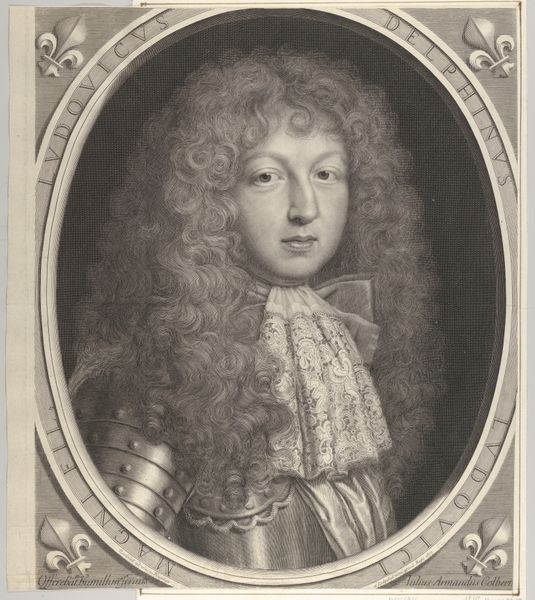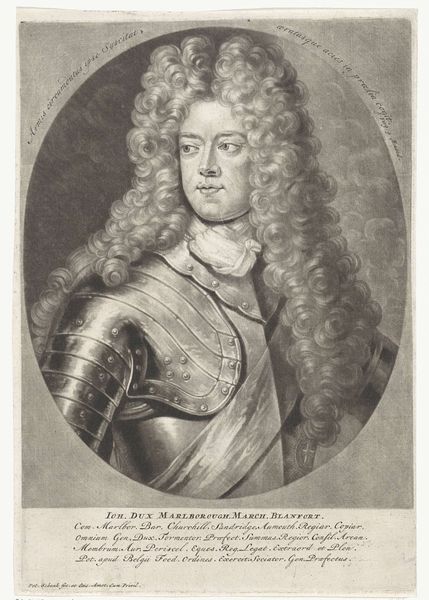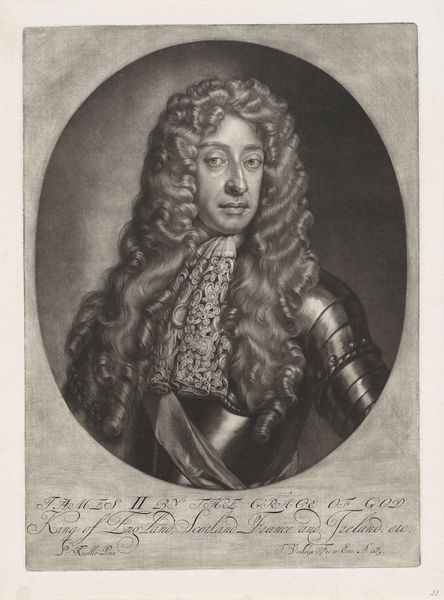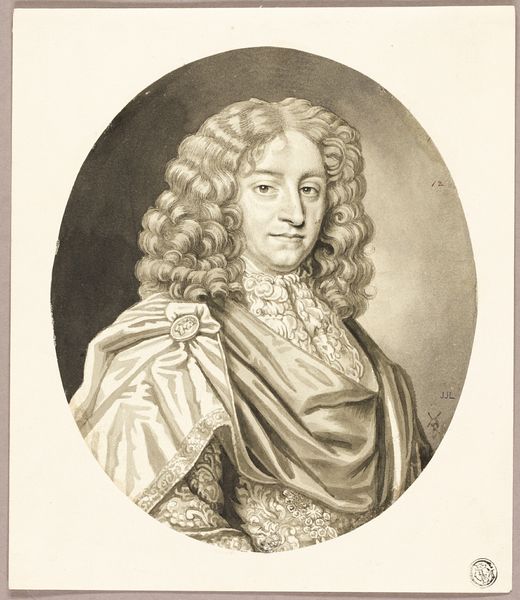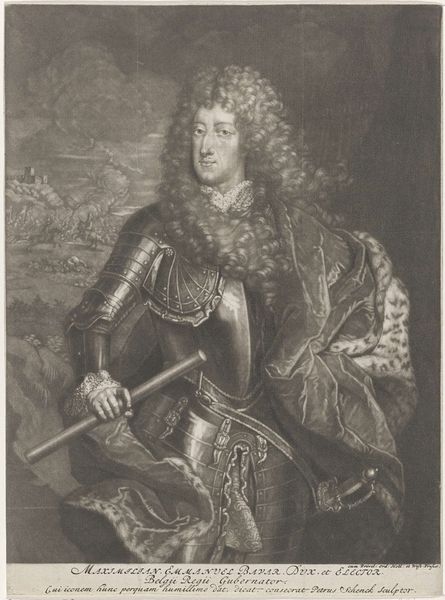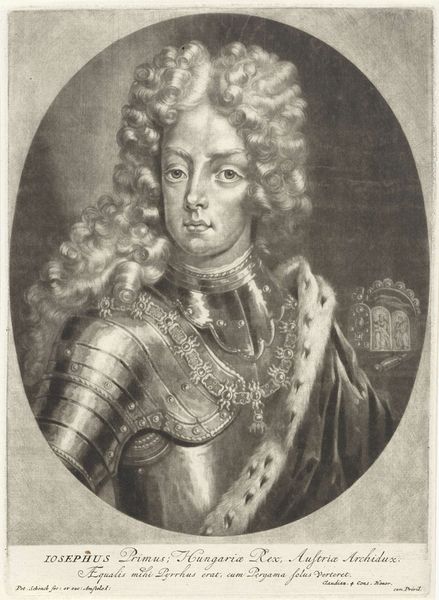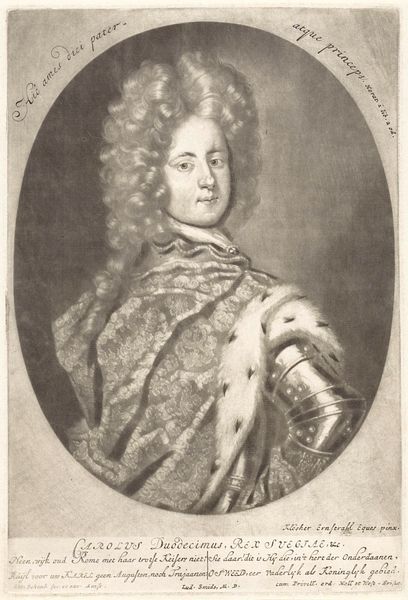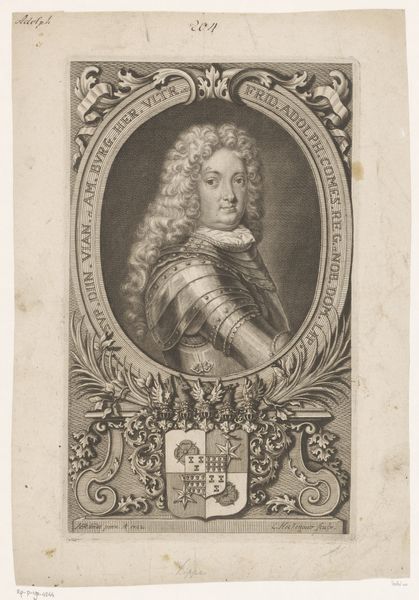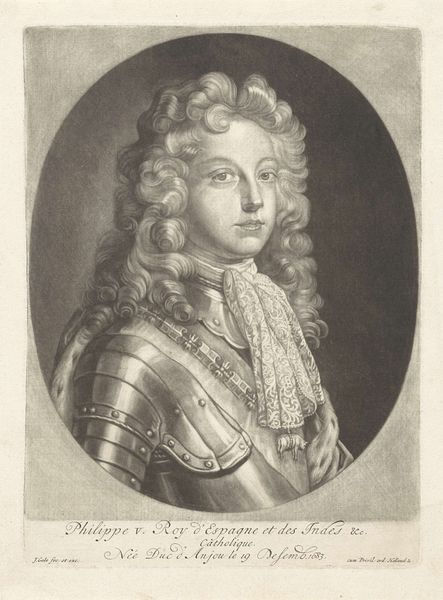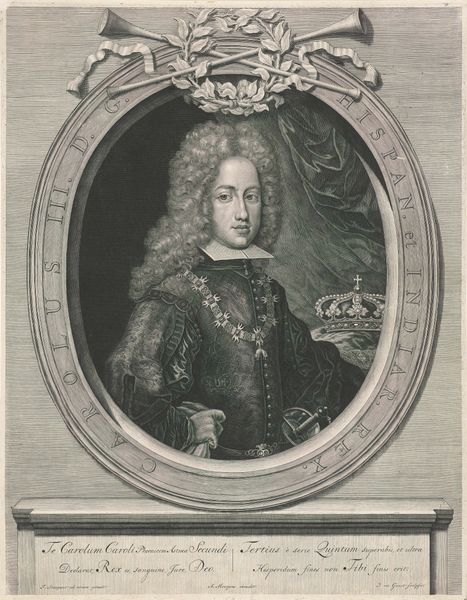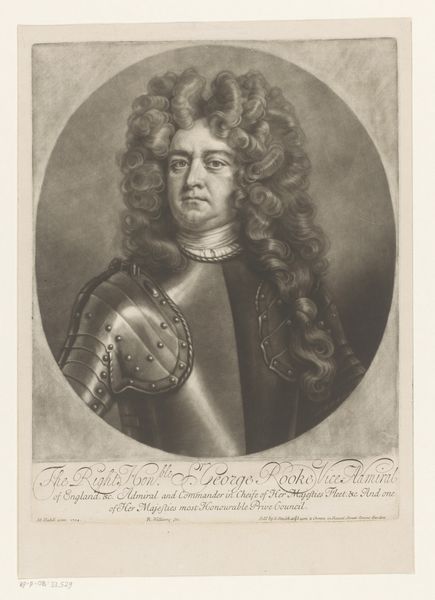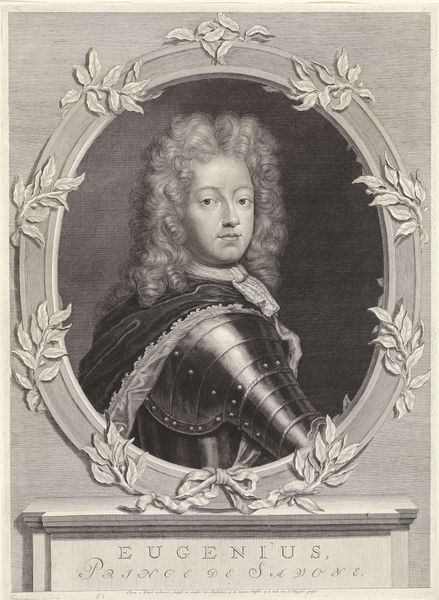
Portret van George II Augustus van Groot-Brittannië als prins van Hannover 1700 - 1710
0:00
0:00
drawing, pencil, graphite
#
portrait
#
pencil drawn
#
drawing
#
baroque
#
pencil sketch
#
charcoal drawing
#
pencil drawing
#
pencil
#
graphite
#
portrait drawing
#
graphite
Dimensions: height 327 mm, width 252 mm
Copyright: Rijks Museum: Open Domain
William Faithorne the Younger created this portrait of George II Augustus of Great Britain as Prince of Hanover through mezzotint, a printmaking process that allows for rich tonal values. Faithorne made this portrait in a time when the British aristocracy were consolidating their power, and defining their identity through displays of wealth and status. George II, adorned in armor and an elaborate wig, embodies the ideals of royalty. The armor speaks to a history of military strength, while the wig, an emblem of status, illustrates the cultural norms of the period. These symbols create an image of power, but what does it conceal? The portrait also subtly reflects the complex relationship between personal identity and political power. By embracing both British and Hanoverian identities, George II navigated the complexities of his lineage, shaping a new, unified monarchy. This image invites us to consider the interplay of identity, power, and history, and how these elements shape our understanding of leadership.
Comments
No comments
Be the first to comment and join the conversation on the ultimate creative platform.
